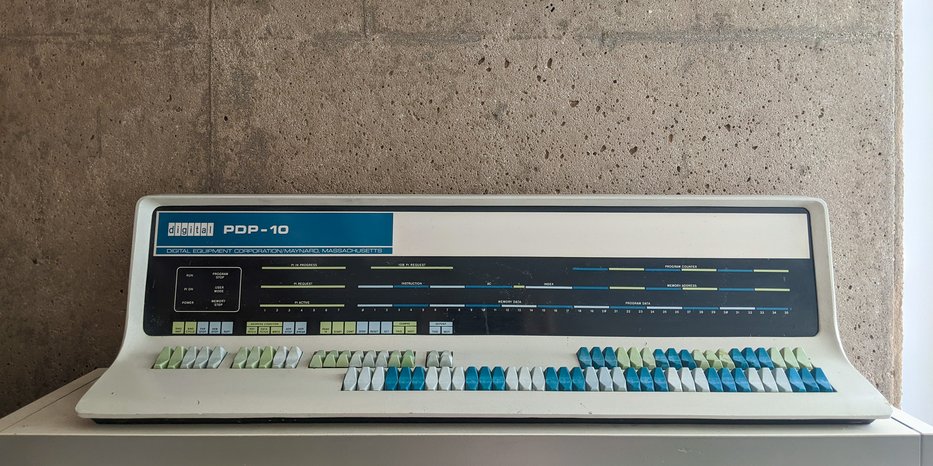Linkage
-
Irritated by repeated claims that spiral galaxies are logarithmic spirals (\(\mathbb{M}\)), sourced to pop science instead of expert research, I found “Pitch angle variations in spiral galaxies” (Savchenko & Reshetnikov, MNRAS 2013) which tells a more complicated story. In logarithmic spirals, the pitch angle is constant, in Archimedean spirals it decreases with radius, and in hyperbolic spirals it increases. All three are used as models of galaxies. But real galaxies have more varied pitch angles that do not match these models.
-
Good Shurik Grothendieck (\(\mathbb{M}\)). James Propp writes (another) account of Grothendieck, as a way of explaining of how a scene from Good Will Hunting on the nature of genius may not be as inaccurate as he once thought it was.
-
Ian Agol posts a link to a Quanta story on his research showing that certain four-dimensional surfaces connecting pairs of knots can be used to partial order them, asking “how well mathematicians that aren’t topologists can grok the concepts described”.
-
Github’s markdown rendering now supports MathJax, finally (\(\mathbb{M}\), via). Github uses this rendering e.g. for the home pages of github packages. For some reason their chosen syntax is a little different from Kramdown and from modern LateX. Kramdown (which is what my Jekyll-based blog uses) delimits both inline and display math with double-dollar. Modern LateX (and Mathstodon) uses backslash-paren and backslash-square-bracket. Github uses old-school-TeX single-dollar and double-dollar.
-
Niles Johnson posts an example of tensor products. Over the integers, \((\mathbb{Z}/a)\otimes(\mathbb{Z}/b)=\mathbb{Z}/\gcd(a,b)\), maybe not what you might have expected for a product. In the ensuing thread, Jacob Siehler writes that tensor products are “one of the things where you can vacillate for years between ‘This is so simple I don’t understand what all the fuss is,’ and ‘Apparently I do not understand this at all.’ ” I agree.
-
“Squaring the Circle”, Troika, 2013 (\(\mathbb{M}\)): an artwork that, from the intended viewpoint, looks like a circle, but with a square reflection in the mirror behind it. See also David Richeson’s “Squaring the circle in a mirror” in Math. Horizons about this piece.
-
Ship in a Klein bottle (via). Nice rendered artwork by J. Miguel Medina.
-
If you’re an academic, you’re probably unhappy with Chegg (\(\mathbb{M}\)). I know I am. Not so much for promoting intellectual property theft, but because they profit from miseducating students by luring them into copying rather than getting the benefit of their own work, and because they greatly boost my workload by forcing me to make up new problems instead of reusing them. But did you know that your university’s retirement fund investors may well be financial supporters of Chegg?
-
You can make a room whose walls are entirely mirrored (\(\mathbb{M}\)), with the property that a light source at any point will leave some parts of the room dark. I’d previously only seen this as a mathematical construct but in this video Steve Mould plays with a physical one.
-
New Wikipedia Good Article: Squaring the circle (\(\mathbb{M}\)). It mentions an approximation to \(\pi\) by Ramanujan based on truncating the continued fraction
\[\pi^4=97 + \cfrac{1}{2 + \cfrac{1}{2 + \cfrac{1}{3 + \cfrac{1}{1+\cfrac{1}{16539+\cdots}}}}}\]Does anyone understand why this continued fraction has such a big term? Equivalently, why do powers of \(\pi\) seem to have unusually good rational approximations?
Relatedly, I reviewed (but did not significantly edit) another new Good Article, Lonely runner conjecture, on the unproven conjecture that for \(n\) runners moving at different linear speeds around a circular track, each runner will eventually be far from all other runners.
-
When I was an undergrad, I had a job on campus as a DECsystem-20 systems programmer (\(\mathbb{M}\)). So when my colleague Rich Pattis announced that, in preparation for his impending retirement, he was clearing out his office and giving away, among other things, the PDP-10 front console he had rescued from the trash pile of another university, I jumped at the opportunity. Here it is, atop one of my office bookshelves. Note the 36 keys in the front row: its memory was organized into 36-bit words, not bytes.

-
In Poland, getting a full professor title requires sign-off by the president of the country, currently Andrzej Duda. As part of a pattern of holocaust denial from Duda’s party, Duda has refused for three years to sign off on the application of Michał Bilewicz, head of the Center for Research on Prejudice at the University of Warsaw and a prominent researcher on, among other things, anti-semitism in Poland (\(\mathbb{M}\), via).
-
Here’s a new illustration for the Wikipedia article on Mrs. Miniver’s problem (\(\mathbb{M}\)). The problem asks to arrange two circles so that their intersection (yellow) has the same area as the surrounding parts of the union (blue). It involves solving a transcendental equation, so this seemed like a good time to write a script to find the geometry numerically before switching to a graphics editor to color it in.
-
In search of the least viewed article on Wikipedia (\(\mathbb{M}\), via). The trick is that the “random article” button isn’t uniformly random on articles. It tags articles with permanent random numbers in the unit interval, and when pressed picks another random number and looks for the next larger tag. For seldom-viewed articles, most views are random, and the probability of getting a random view is proportional to the length of the gap between an article’s permanent random number and the next smaller one. So the tail of least-viewed articles is dominated by unlucky articles whose gap is small.
-
Any baker knows: crumple your parchment paper to make it more flexible and fit neatly into any curved pie dish (\(\mathbb{M}\)). But one reason this works involves deep mathematics: cut or cleanly folded paper can only fit piecewise-developable surfaces such as patches of planes, cylinders, or cones. By the Nash–Kuiper theorem, continuous but non-smoothly-differentiable (crumpled) paper surfaces can fit any surface.